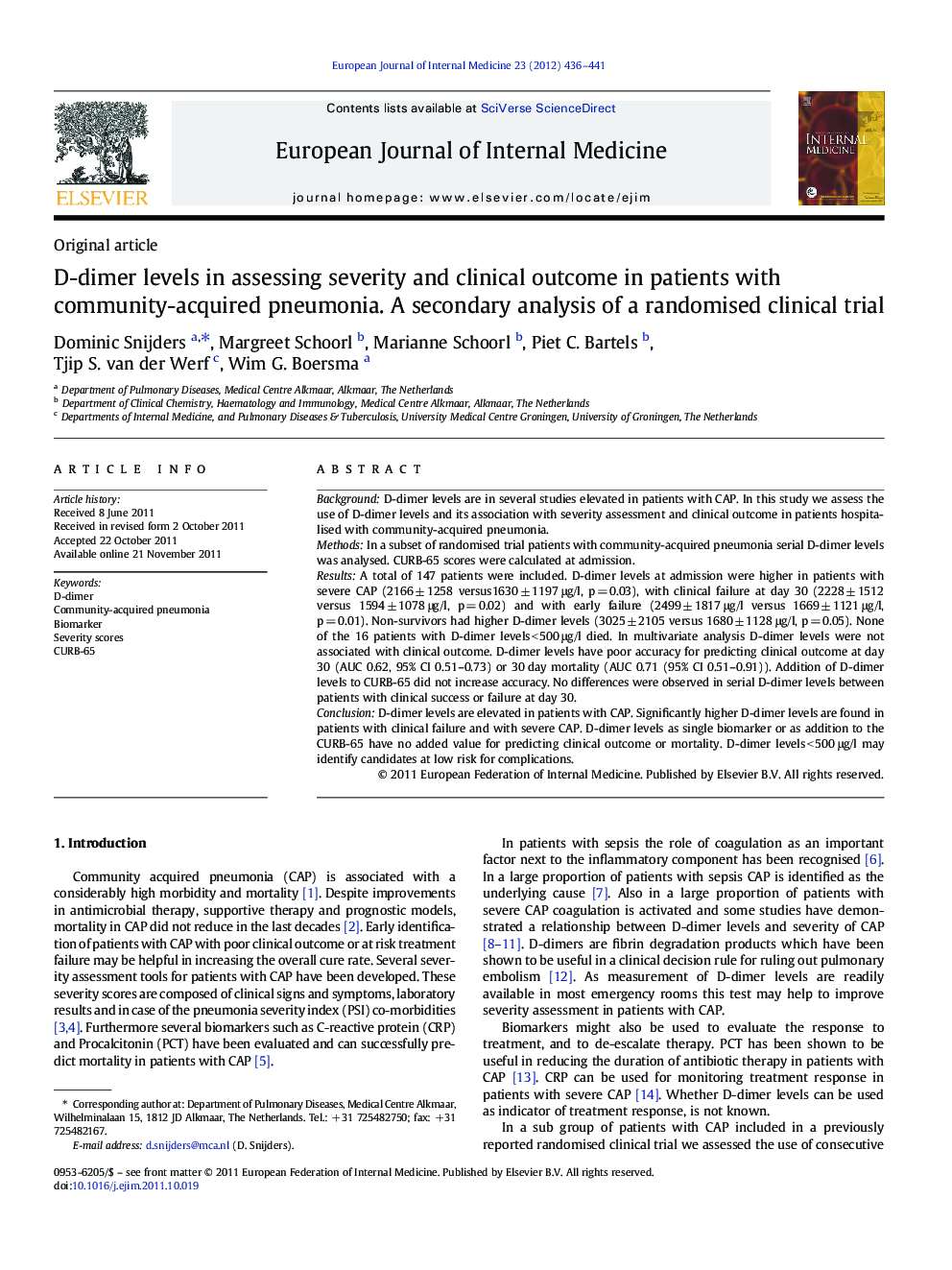| Article ID | Journal | Published Year | Pages | File Type |
|---|---|---|---|---|
| 3466848 | European Journal of Internal Medicine | 2012 | 6 Pages |
BackgroundD-dimer levels are in several studies elevated in patients with CAP. In this study we assess the use of D-dimer levels and its association with severity assessment and clinical outcome in patients hospitalised with community-acquired pneumonia.MethodsIn a subset of randomised trial patients with community-acquired pneumonia serial D-dimer levels was analysed. CURB-65 scores were calculated at admission.ResultsA total of 147 patients were included. D-dimer levels at admission were higher in patients with severe CAP (2166 ± 1258 versus1630 ± 1197 μg/l, p = 0.03), with clinical failure at day 30 (2228 ± 1512 versus 1594 ± 1078 μg/l, p = 0.02) and with early failure (2499 ± 1817 μg/l versus 1669 ± 1121 μg/l, p = 0.01). Non-survivors had higher D-dimer levels (3025 ± 2105 versus 1680 ± 1128 μg/l, p = 0.05). None of the 16 patients with D-dimer levels < 500 μg/l died. In multivariate analysis D-dimer levels were not associated with clinical outcome. D-dimer levels have poor accuracy for predicting clinical outcome at day 30 (AUC 0.62, 95% CI 0.51–0.73) or 30 day mortality (AUC 0.71 (95% CI 0.51–0.91)). Addition of D-dimer levels to CURB-65 did not increase accuracy. No differences were observed in serial D-dimer levels between patients with clinical success or failure at day 30.ConclusionD-dimer levels are elevated in patients with CAP. Significantly higher D-dimer levels are found in patients with clinical failure and with severe CAP. D-dimer levels as single biomarker or as addition to the CURB-65 have no added value for predicting clinical outcome or mortality. D-dimer levels < 500 μg/l may identify candidates at low risk for complications.
